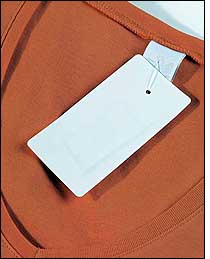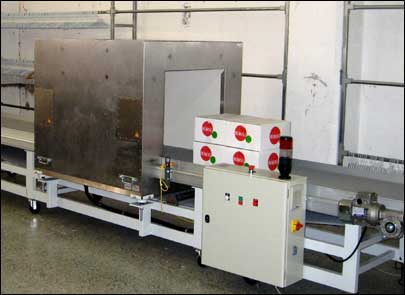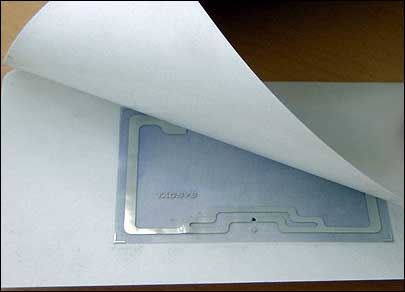Boboli, a Spanish apparel manufacturer and retailer of children’s clothing, is set to launch a pilot program aimed at evaluating the business benefits of employing RFID for item-level product identification. Specifically, the company hopes to increase the speed and accuracy of receiving goods, while also increasing the volume of product it can process and ship to retail locations.
The first phase of the project, set to begin by the end of August 2008 and run for three months, will focus on making the receiving and shipping processes at Boboli’s main distribution center (DC) in Barcelona more efficient and accurate, as well as on speeding the distribution of the apparel to individual stores. This phase will involve a single, Moroccan-based clothing supplier that provides 10 percent of all goods received by the DC.
To each item, the supplier will attach a hangtag containing a Tagsys RapidTRAK RFID UHF passive EPC Gen 2 inlay pre-encoded with an Electronic Product Code (EPC) that includes product style and size information, as well as a unique identifier. At the DC, cases of the tagged garments will be placed on a conveyor belt and moved through a Tagsys interrogator built into a tunnel form factor. The reader’s antenna surrounds the belt, interrogating the tags within the cases from three directions (the top and both sides) as they move through the tunnel.
The reader will filter and forward the EPC reads to Tagsys e-connectware software, which will then compare the EPCs to the advance shipment notice the DC receives for that order, to ensure that it is complete. If, after reading all of the item tags, a shortage or overage is detected, e-connectware will transmit an alert to the DC’s personnel.

According to Didier Mattalia, Tagsys’ fashion and apparel sales director, Boboli (which declined RFID Journal‘s interview request, made through Tagsys) does not consider this initial three-month pilot a technology test. “The technology is proven,” he says, adding that the Spanish retailer has already tested the tunnel reader, which is functioning well. “[Boboli] wants to evaluate its retail investment. There is not a go/no-go [decision] at the end of this pilot. This is more of a validation of the benefits.”
By replacing its manual receiving functions at the distribution center—which has involved scanning the bar-coded label on each case of apparel items it receives—with an automated RFID-based receiving process, Boboli expects to boost both inventory accuracy and the speed with which its DC can move product to its stores. This, in turn, should help retail stores maintain or increase sales by keeping shelves stocked, as well as by selling seasonal items or new products according to schedule. The company eventually plans to outfit its stores with RFID interrogators so employees can leverage the RFID tags to more quickly process the receipt of items arriving from a DC, as well as perform inventory counts and locate specific items.

Boboli hopes to have more of its suppliers source-tagging apparel once the three-month initial phase of the project is complete, Mattalia says, and intends to have half of them tagging goods by the end of 2009, with the remainder coming online beyond that point. What’s more, the company expects to reassign up to five of its DC employees who currently scan bar codes as part of the receiving process—moving them to other tasks in the warehouse, such as cross-docking the goods to prepare them for shipment to stores.
According to Mattalia, the tunnel interrogator can accurately read up to 18,000 tagged articles of clothing per hour, based on the results of its deployment by Portuguese fashion retailer Throttleman (see Throttleman Adopts Item-Level Tagging).
Avery Dennison is presently converting the Tagsys RapidTRAK inlays into hangtags, and Tagsys worked closely with Spanish technology integrator Cetemmsa to design the RFID application. Cetemmsa will manage the pilot deployment and provide technical assistance to Boboli.
Boboli manufactures more than 2 million items annually, which are sold in hundreds of stores, including 30 that it owns and operates in Europe, the Middle East, Asia and the Americas.


